Previously titled ‘Remember,’ Revised
Reading from the back matter of The Coming of Conan the Barbarian, Del Ray, 2003, pages 429-52
This is an excellent companion for Howard’s earlier Conan stories. Patrice sources Howard’s literary and person inspiration for much of his early work; which include Jack London, H. P. Lovecraft, Herodotus, Livy, Bulfinch, his obsession with ‘remembrance/reincarnation’ stories, and his own Texas heritage. It seems to this reader that Howard believed in genetic dreams. I highly recommend Hyborian genesis for the Howard reader, and would like to make an additional suggestion.
First off, literary reviewers tend to lack time to read nonfiction written after 1800, which is to say almost all of it. This is a necessary fact, as being well read in fiction represents a massive reading commitment. Think about it, if you read 5 of 10 books on the Battle of Tours, you still know the story. But if you read only 5 of the top 10 horror authors of the 1930s, well, you have a blind spot that you could drive a literary truck through. So, literary reviewers will tend to have their blind spots in the nonfiction realm. The orthodoxy, therefore, is that fiction sources fiction, not nonfiction.
Regarding the genesis of an unpublished Conan story set in the Black Kingdoms, The Vale of Lost Women, reviewed on this site. It is a story of brutal ethnic cleansing. Louinet writes, “As to the racial overtones of the story, while the violent ethnocentrism is understandable when we recognize its origin in the nineteenth-century Anglo-Saxon settler viewpoint, with the blacks standing in for Indians, it makes for unsettling reading for a modern audience.”
I believe Patrice correctly notes that Howard was, at this period, heavily influenced by Texas folk history. I do not however think the blacks were standing in for Indians. Howard used the Picts as Indian stand-ins when he did settler stories. This was a white interloper story in line with Queen of the Black Coast and the untitled draft from this period that was later published as a pastiche titled The Snout in The Dark in the Ace paperback collection. I think Vale was placed between Queen and Snout in the Ace collection, which attempted a chronological presentation of Conan’s career.
What I think Howard was doing here was utilizing recent nonfiction literature on the Sudan [brown versus black with white interlopers… Churchill was writing poetry about shooting “fuzzy wuzzies” in the head with his automatic pistol.] and the recent U.S. Marine Corp operations in Haiti, with white marines serving as interlopers [this stuff appeared in newspapers], and often mercenaries, in the black civil war. During Howard’s lifetime the U.S. Marine Corp was all over the Caribbean, white warriors propping up light-skinned business at the expense of dark-skinned labor, a common Conan occupation.
Such dirty colonial and post colonial civil strife as Howard could easily have read about in newspaper editorials and books by current authors like Lothrop Stoddard, are not on the literary radar screen, so their oversight as possible source material by a literary reviewer is quite understandable. I just wanted to point this out, as one who writes in similar dark corners as Howard, that such author’s tend to use as much history and non-fiction literature for inspiration as they do literature, for no other reason than the fact that history and current events are so reliably dark. Such, I suspect, is the source for that un-definable sense of ‘the real’ for which Howard is noted, even as found in the pages of a tale of sorcery in some make believe world.
It is plain in Howard’s Swords of the Red Brotherhood, set in 1620s America, that he had done significant historical reading. Few people know of the Italian Navigator working for France who explored America in 1524, kidnapping a baby in the process, but Howard knew and got the date correct. He also has the protagonist make a trek from the Mexican coast to the Pacific Northwest—almost identical in nature [though the opposite in destination] to an actual Irish sailor’s odyssey walking across the savage continent and living with Indians.
So, whether it was a school text book, a newspaper story or a book picked up at a relative’s house during a visit [I have based three novels on passages from non-fiction books picked up and skimmed while visiting relatives]. In the end, most editors and reviewers of fiction have read less non-fiction, as a matter of their occupation, than have the writers they edit and review.
My overall point is to look at the fact that readers of Howard’s time—if not having the world library at their fingertips as we do—tended to read more nonfiction on an incidental basis than postmodern readers do as the result of internet searches. Just going back to 1970, I was given encyclopedias and boys history books for Christmas, such as Meet the Men Who Sailed the Seas, where my grandson’s generation is weaned on politically correct fairy tales and books about modern life. Howard came of age in a land recently settled by heroic men, when non-fiction literature was heroic in scope, focusing on the accomplishments of great men. If nothing else, I believe that fact influenced his commitment to heroic fiction as much as any story he might have read.




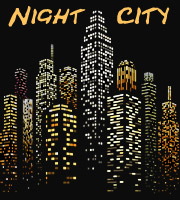
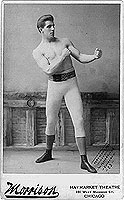

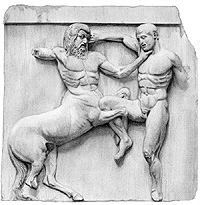
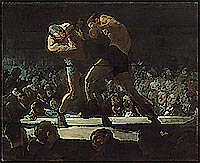
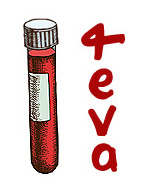

Jim:
The Marines used to keep the natives off the United Fruit Co.,("La Frutera") so the story goes. Smedley Butler wrote a book called "The War Racket". I've never read it, I suspect its been disappeared. He was not, I hear, a fan of Banana Jarhead Diplomacy. Like the old Tom Lehrer song, "Send The Marines"
(MiMiMi) "They've got to be protected, all their rights respected, 'til somebody we like can get elected!"
In the old days, a retired Marine Sgt. Major was the CO of the Garde de Haiti, when it was still a functioning country. Their uniforms looked like the prewar Corps.
All the leading lights of WW II in the Corps had done time in S. America, honing their jungle fighting skills. It was they who made a martyr of Sandino.
Mostly forgotten, 'cept for Marines and old geezers like me.
"War Is A Racket" is free and in the public domain:
archive.org/details/WarIsARacket
It's a quick read at 14 pages, it ends with:
TO HELL WITH WAR!